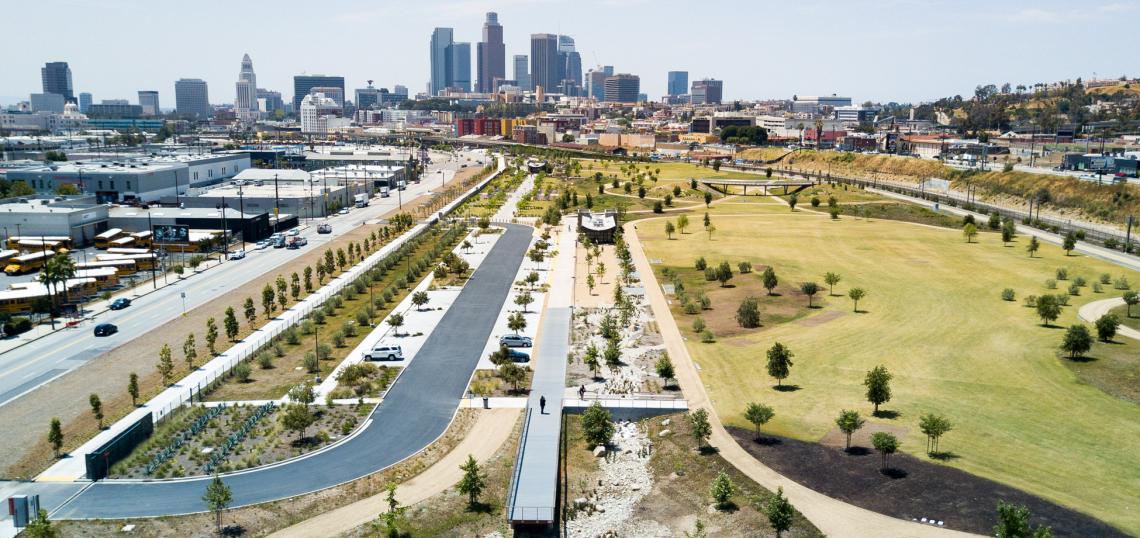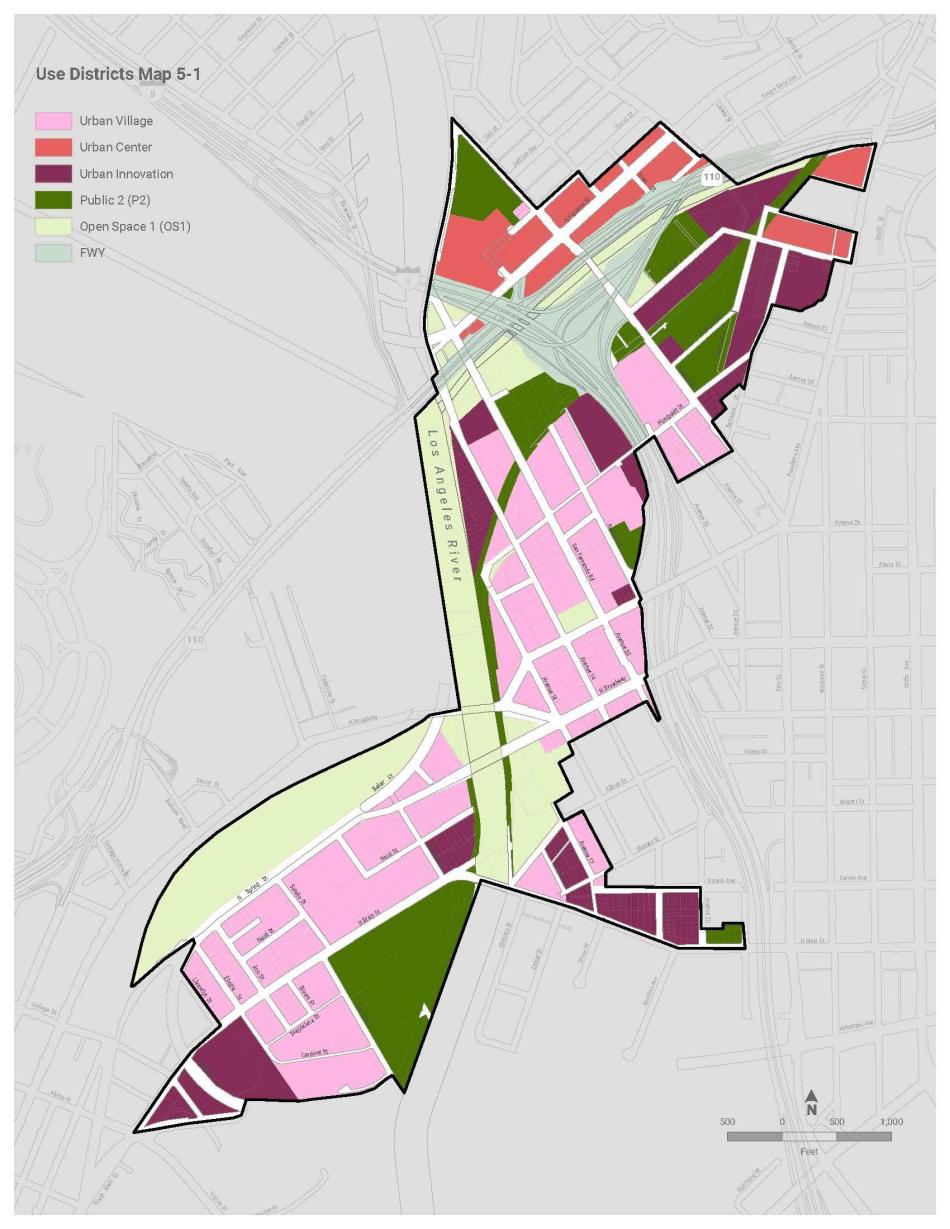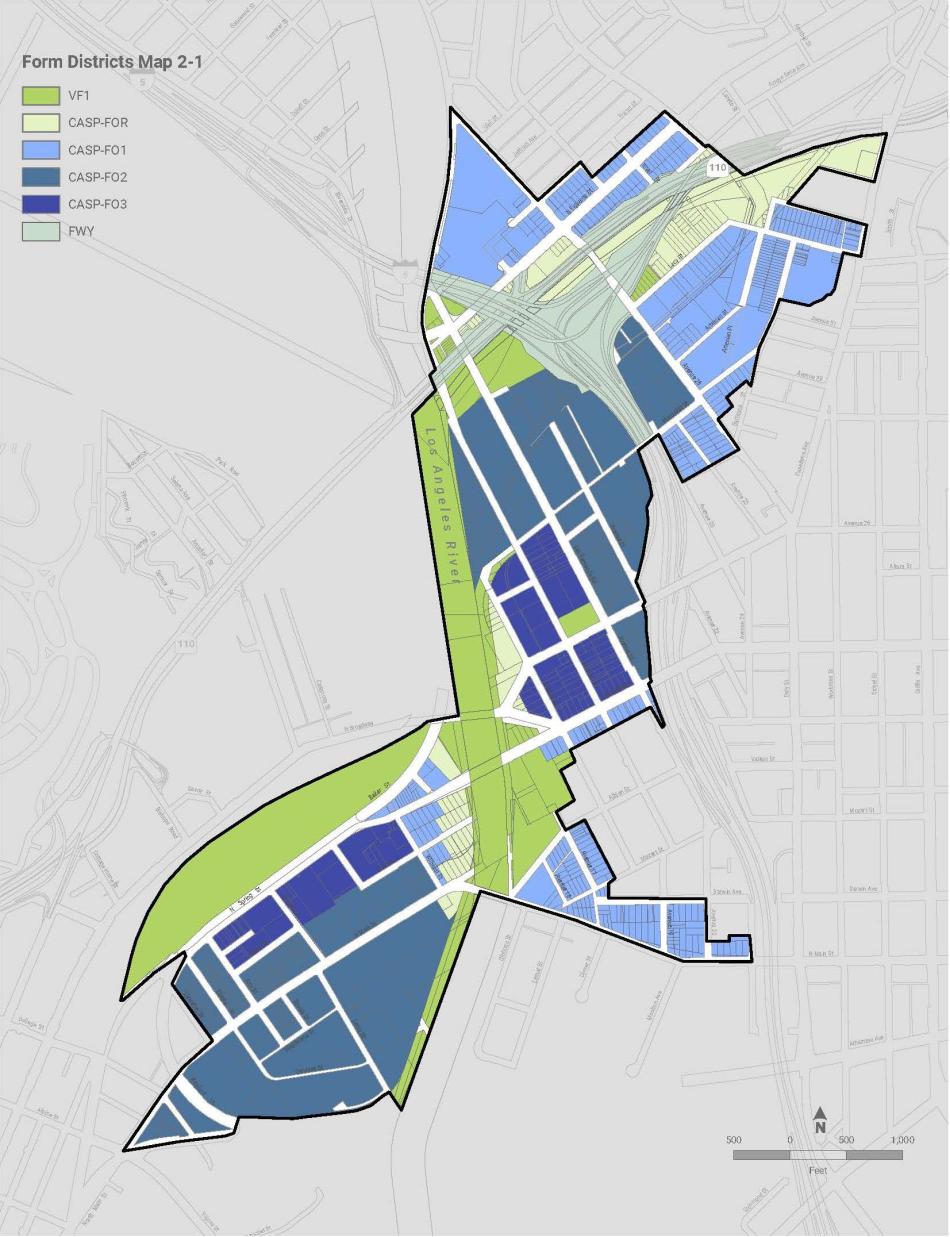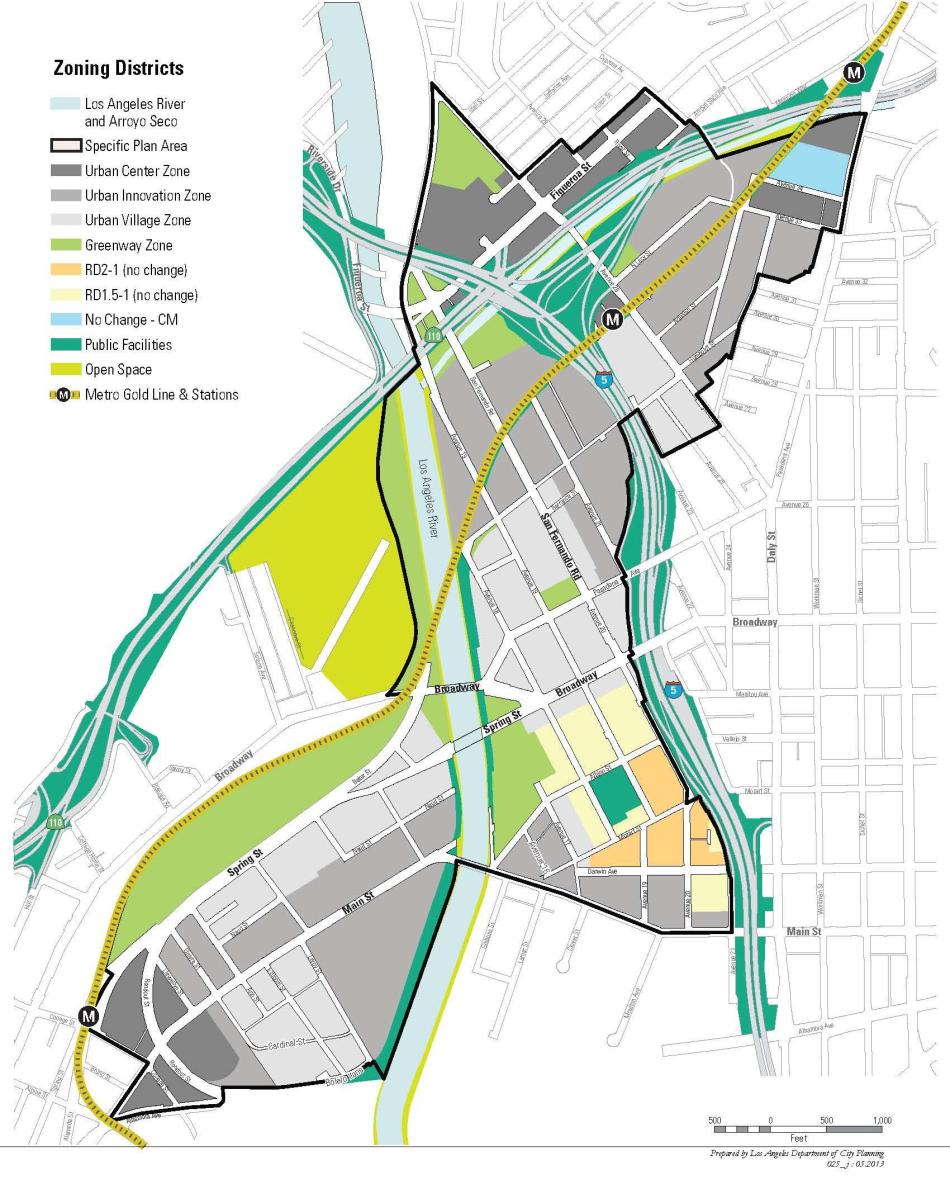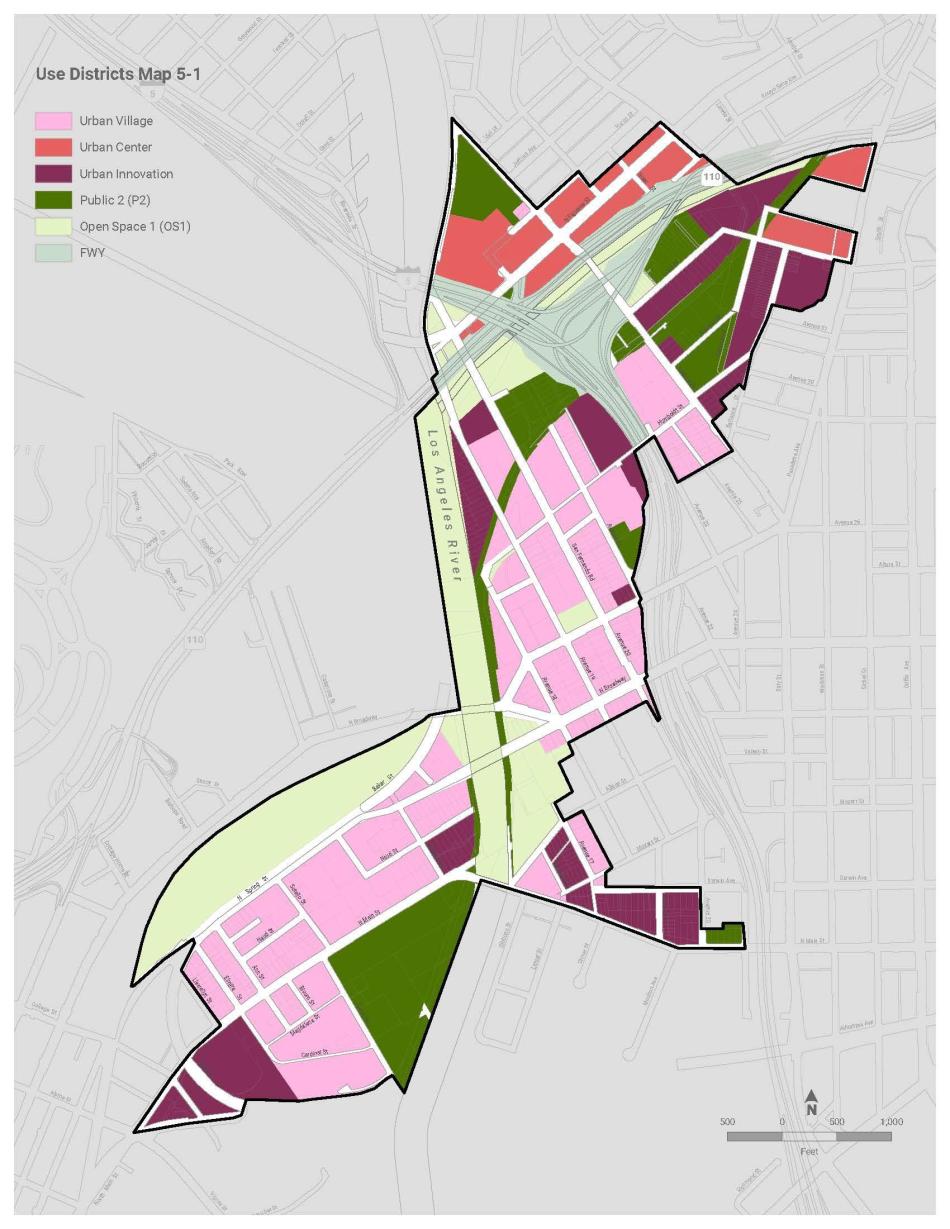A draft environmental study published this month offers a closer look at proposed tweaks to the Cornfield-Arroyo Seco Specific Plan (CASP) which are intended to facilitate more housing construction around Los Angeles State Historic Park.
The CASP, which was adopted one decade ago, sets land use regulations for an approximately 660-acre area which spans from Chinatown to Lincoln Heights on the opposite side of the Los Angeles River. While the specific plan received much acclaim at the time, particularly for eliminating automobile parking requirements, its zoning rules have failed to generate much in the way of new housing - even at a time when the surrounding Downtown area underwent its biggest building boom in a century.
One of the key changes proposed for the CASP is an expansion of the predominantly residential Urban Village zone, which currently covers approximately 19 percent of the plan area. Under the revised zoning, the Urban Village would encompass approximately 28 percent of the plan area, or 132 acres. This expansion would include the conversion of existing Urban Innovation land located along Main and Naud Streets in Chinatown, as well as several blocks between the Los Angeles River, the Arroyo Seco, the 110 Freeway, and the 5 Freeway in Lincoln Heights.
The update also introduces a new Public Use District, which would be applied to all government-owned property within the CASP area. While this land is primarily intended for development with government offices and other related facilities, it could also be opened up to development through public-private partnerships. In such cases, the Public Use land would adopt the most permissive zoning of neighboring properties.
While allowable uses in each of the existing zones of the CASP would remain largely unchanged, several small alterations are proposed to facilitate the construction of housing. This includes lifting a prohibition on purely residential buildings in the Urban Village zone, which would open up new properties to mixed-income and affordable developments. The proposed update would also keep the jobs-centered focus of the Urban Innovation and Urban Center zones, but shift away from capping the percentage of floor area which can be dedicated to residential uses, and instead set a minimum floor area ratio for industrial, commercial, or other jobs-producing uses.
The CASP update would also adopt new building form regulations which are similar to elements of the new zoning code, which was recently implemented through the DTLA 2040 plan. This change would decouple a parcel's zoning designation from allowable floor area, which would instead be regulated by new form districts. These districts, in addition to regulating FAR, would also set maximums on lot coverage and in limited cases, building height.
As with the recent community plans, the CASP update would incorporate its own tailored community benefits program, offering waivers of development standards and bonuses for projects that offer affordable housing or other public amenities. Similar to DTLA 2040, the CASP community benefits program would be structured into two tiers. Housing development projects could double allowable floor area from a base of 1.5 FAR to 3.0 FAR by providing restricted affordable units at the following levels:
After providing for affordable housing, additional development rights could be accessed by providing other benefits, including publicly accessible open space or community facilities such clinics or libraries. Applicants could also have the option of providing additional affordable housing.
Under these proposed changes, the Planning Department estimates that the CASP area could accommodate up to 36,000 residents, and over 10,000 jobs - a sharp increase from the roughly 6,000 residents and 5,400 jobs that exist today. However, those totals far outstrip SCAG's growth projections for the neighborhood, which anticipate a population of roughly 14,400 and just shy of 8,800 jobs in the area by 2040.
Follow us on social media:
Twitter / Facebook / LinkedIn / Threads / Instagram
- Cornfield-Arroyo Seco Specific Plan (Urbanize LA)
- CASP Update - Summer 2023 (LADCP)





